Inspector Joseph French is a fictional British police detective created by Irish author Freeman Wills Crofts. French was a prominent detective from the Golden Age of Detective Fiction, appearing in twenty nine novels and a number of short stories between 1924 and 1957. The character was introduced in the 1924 novel Inspector French's Greatest Case, where he investigates a deadly diamond robbery in Hatton Garden. The series relied largely on puzzle mysteries.
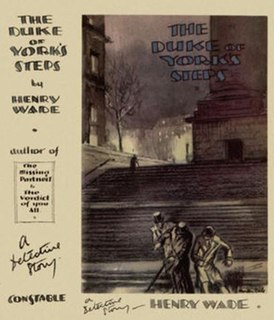
The Duke of York's Steps is a 1929 mystery detective novel by the British writer Henry Wade. It was the first in a series of seven novels featuring the character of Chief Inspector Poole, published during the Golden Age of Detective Fiction. The title refers to the steps that connect the Duke of York Column to The Mall in Central London. It is notable for its portrayal of a German Jewish character, a banker who seeks revenge for his mistreatment by murdering a fellow banker. It was well-received by critics and sold well. In The Observer the reviewer Gerald Gould wrote "It would be difficult to overpraise it".

No Friendly Drop is a 1931 mystery detective novel by the British writer Henry Wade. It was the second in a series of seven novels featuring the character of Inspector Poole, published during the Golden Age of Detective Fiction. It was released in the United States the following year by Brewer and Warren where it received positive reviews in the New York Herald Tribune and the New York Evening Post, with the latter describing it as "A superior detective story, depending more upon intrinsic interest in a logical plot than upon excitement and goriness for its hold on the reader".
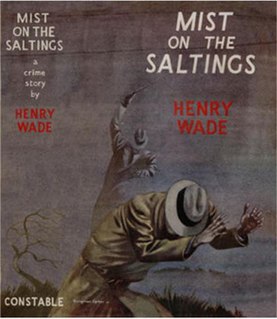
Mist on the Saltings is a 1933 mystery thriller novel by the British writer Henry Wade. It marked a change in Wade's work, part of the Golden Age of Detective Fiction, with a shift toward more realistic character development and a favouring of accurate police procedural methods over the puzzle elements compared to his earlier novels. Celebrated crime novelist Dorothy L. Sayers wrote a review of the novel for the Sunday Times.

A Dying Fall is a 1955 mystery detective novel by the British writer Henry Wade. It was the penultimate novel by Wade, one of the leading writers of the Golden Age of Detective Fiction. It was followed by his final novel The Litmore Snatch two years later

Constable Guard Thyself is a 1934 mystery detective novel by the British writer Henry Wade. It was the third in a series of seven novels featuring the character of Chief Inspector Poole, although it was preceded by the 1933 short story collection Policeman's Lot in which seven of the twelve stories had feaured Poole. After his more experimental novel Mist on the Saltings Wade returned to the traditional detective model.
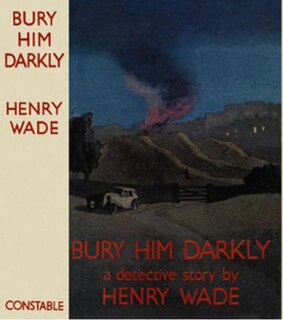
Bury Him Darkly is a 1936 mystery detective novel by the British writer Henry Wade. It was the fourth in a series of seven novels featuring the character of Inspector Poole. Along with the following Poole novel, Lonely Magdalen, it marked a shift towards more realistic police procedurals that has been described as pioneering. Superintendent Fraser, who appeared in Wade's fist novel The Verdict of You All, also appears as one of the characters.
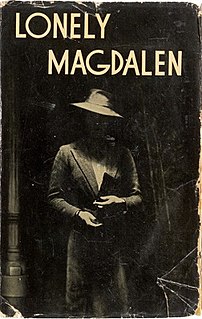
Lonely Magdalen is a 1940 mystery detective novel by the British writer Henry Wade. It was the fifth in a series of seven novels featuring the character of Inspector Poole, published during the Golden Age of Detective Fiction. The book focuses more closely on police procedural than the traditional puzzle format. There was a thirteen year gap between this and the next entry in the series Too Soon to Die.

The Verdict of You All is a 1926 mystery detective novel by the British writer Henry Wade, his debut novel. Both this and his following novel The Missing Partners revolve around potential miscarriages of justice. It was published in the United States by Payson and Clarke in 1927. A success it launched his career as one of the prominent writers during the Golden Age of Detective Fiction. The title refers to the traditional question asked in court by a judge of the jury to establish whether they have reached a unanimous verdict.
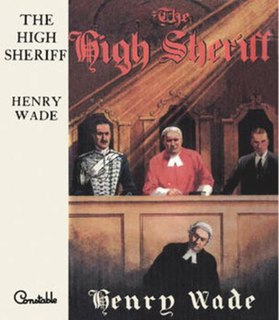
The High Sheriff is a 1937 mystery detective novel by the British writer Henry Wade. Wade was a writer of the Golden Age of Detective Fiction, best known for his series featuring Inspector Poole. This was one of a number of stand-alone novels he wrote, structured as a partially inverted detective story.

Too Soon to Die is a 1953 mystery detective novel by the British writer Henry Wade. It was the sixth in a series of seven novels featuring the character of Inspector Poole, published during the Golden Age of Detective Fiction. It followed a thirteen year gap since the publication of the previous novel Lonely Magdalen.

Gold Was Our Grave is a 1954 mystery detective novel by the British writer Henry Wade. It was the seventh and last in a series of novels featuring the character of Inspector Poole, published during the Golden Age of Detective Fiction.
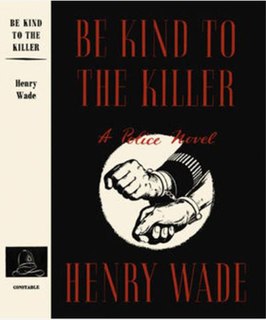
Be Kind to the Killer is a 1952 detective novel by the British writer Henry Wade. As with many of his works it is written in the style of a police procedural.

The Cask is a 1920 detective novel by the Irish-born writer Freeman Wills Crofts. His debut novel, it is considered his masterpiece. Long after the author's reputation had declined, this book was still hailed by critics as a cornerstone of the genre Crofts had been working as a railway engineer before writing the novel, but its success launched him as one of the leading writers of the Golden Age of Detective Fiction. He later went on to create the character of Inspector French of Scotland Yard who appeared in a long-running series of novels.

The Body on the Beam is a 1932 mystery detective novel by Anthony Gilbert, the pen name of British writer Lucy Beatrice Malleson. It is the sixth of ten novels in a series featuring her amateur detective and politician Scott Egerton, a precursor to her better known creation Arthur Crook.
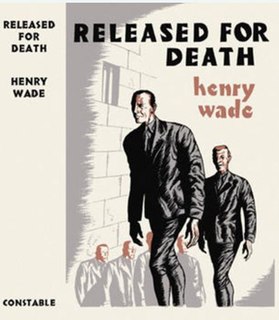
Released for Death is a 1938 crime thriller novel by the British writer Henry Wade. Wade was a writer of the Golden Age of Detective Fiction, best known for his series featuring Inspector Poole. This was one of a number of stand-alone novels he wrote. It has elements of an inverted detective story, rather than the traditional closed circle of suspects.
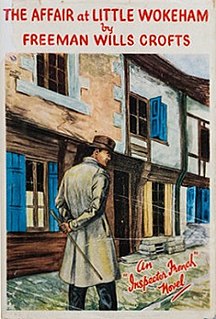
The Affair at Little Wokeham is a 1943 detective novel by the Irish writer Freeman Wills Crofts. It is the twenty fourth in his series of novels featuring Inspector French, a prominent figure of the Golden Age of Detective Fiction. It was published in the United States under the alternative title of Double Tragedy.

Antidote to Venom is a 1938 detective novel by the Irish-born novelist Freeman Wills Crofts. It is the eighteenth in his series of novels featuring Inspector French, a Scotland Yard detective known for his methodical technique. It was reissued in 2015 by the British Library Publishing as part of a group of crime novels from the Golden Age of Detective Fiction.
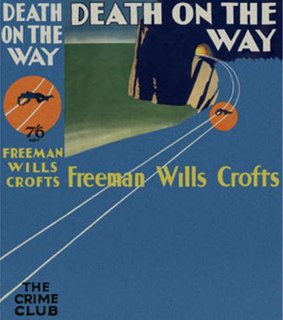
Death on the Way is a 1932 detective novel by the Irish writer Freeman Wills Crofts. It is the ninth in his series of novels featuring Inspector French, a prominent figure of the Golden Age of Detective Fiction. It was published in the United States the same year by Harper under the alternative title Double Death.

Death on the Boat Train is a 1940 detective novel by John Rhode, the pen name of the British writer Cecil Street. It is the thirty second in his long-running series of novels featuring Lancelot Priestley, a Golden Age armchair detective. As in most of the later novels much of the detective footwork is done by Inspector Waghorn of Scotland Yard. The construction of the murder setting bears similarities to Death in the Tunnel, written by Street under his other pen name Miles Burton. With is focus on seemingly unbreakable alibis and railway and ship timetables, it is also similar in style to the Inspector French novels of Freeman Wills Crofts.



















